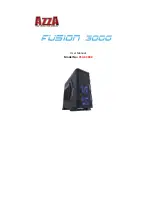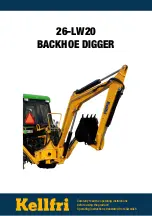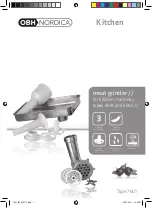
8 (26)
.
Make sure that overhead clearance is sufficient. Hitting an overhead obstacle may
cause the loader to tip over. Keep a safe distance from electric cables, lamps, or
other electric systems; hitting live parts may cause electric shock.
Never go under a raised attachment or the loader boom. Beware of the cutter, which
may be lowered even if the loader engine has been shut down.
Ensure that ventilation is sufficient when operating indoors. Do not operate the loader
in closed spaces regardless of the engine or fuel type. Exhaust gases may
concentrate to hazardous levels.
Never use the attachment to lift or to transport persons or as any kind of work
platform even temporarily.
Make sure to use only an attachment that is in good condition. Check the attachment
thoroughly in regular intervals. Do not modify the attachment in a manner that would
affect its safety. It is prohibited to drill holes on the attachment, and welding or other
means of fixing hooks or other objects on the attachment is strictly prohibited.
Shut down the loader and place the attachment to a safe position as shown in Safe
stopping procedure before any cleaning, maintenance, or adjustments.
Use the attachment only for its intended purpose. Other use may create unnecessary
safety risks, and the equipment may get damaged.
Make sure that the loader is equipped with necessary safety components, and that
they are in working condition. Seat belt must be used. If there are specific hazards
related to the operating area, use appropriate safety equipment.
Also read the safety instructions and correct use of the loader from the operator's
manual of the loader.
WARNING
Risk of crushing - Never allow anyone to get under a
lifted attachment or loader boom.
Keep in mind that the
loader boom can be lowered or tilted even if the engine has
been shut down (crushing hazard). The loader is not intended
to be left to keep a load elevated for longer periods. Always
lower the attachment to a safe position before leaving the
driver's seat.
WARNING









































